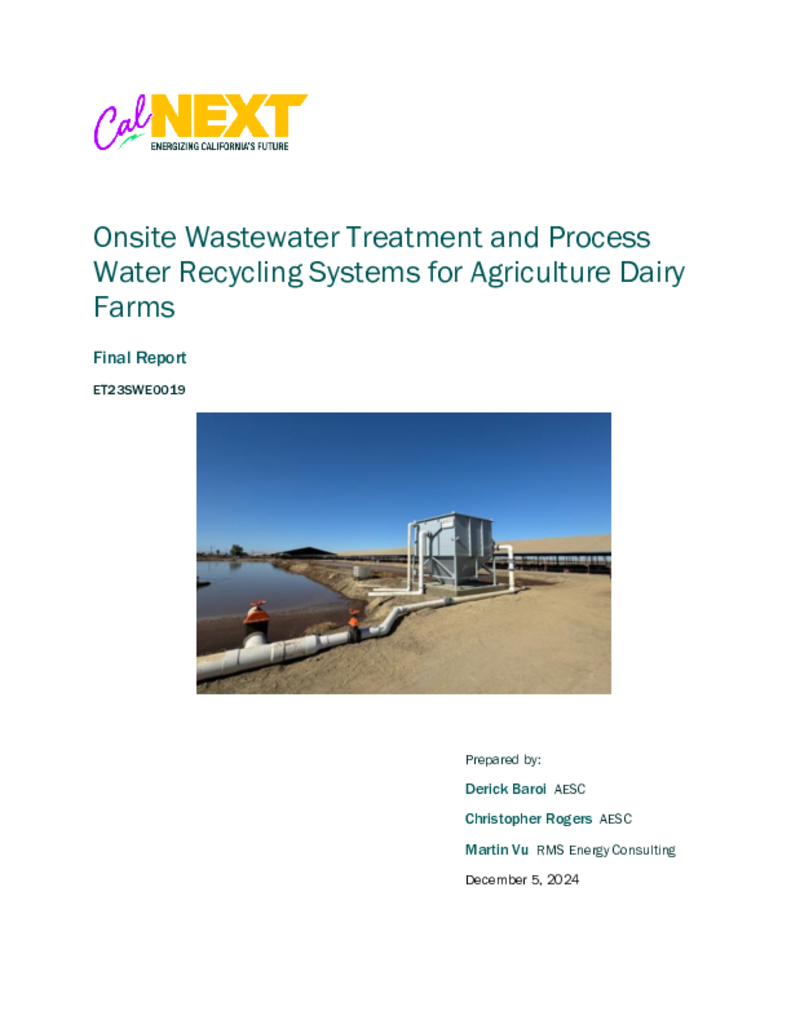ET23SWE0019 - Onsite Wastewater Treatment and Process Water Recycling Systems for Ag Dairy Farms
The proposed study will evaluate emerging technologies designed to remove a majority of containments in dairy wastewater efficiently, allowing facilities to expand their reuse of wastewater in other areas such as drip irrigation, drinking water, facility maintenance, etc. The technologies help customers reduce their energy demand from pumping extra amounts of water from a water table, as well as their water demand and greenhouse gas emissions. The proposed Onsite Wastewater Treatment and Process Water Recycling Systems for agriculture dairy farms will demonstrate a Bead Filtration Wastewater Technology (BFWT) System, which has the ability to recycle its own backwash water. Backwashing is controlled by a small air pump that slowly fills the air chamber below the bead bed.
This project is a field demonstration of an efficient primary treatment of process water and onsite recycling/reuse of the treated process water at a dairy farm located in Tulare County geographic area or other appropriate California test sites in 2023 and 2024. Energy Savings are achieved by reducing energy use through more efficient processing techniques and avoided electricity use, which is embedded in the water saved through the treatment process. With the addition of a Bead Filtration Wastewater Technology System, freshwater dilution pumping systems are no longer needed. Embedded energy consists of all energy inputs into a unit of water required for production, treatment, transport, and any other work that would be needed to bring the water to its final end use destination. The goal is to conduct a field demonstration where the effort will document the electric system impacts both upstream and downstream of the point of technology adoption.
The field study shows that the floating bead filtration technology has the potential to reduce freshwater usage from 56 to 308 acre feet per year, electric energy usage for pumping from 6.2 to 41.5 megawatt-hours (MWh) per year, anthropogenic carbon dioxide equivalent (CO2e) from 0.57 to 3.84 metric tons per year and 1.04 metric tons of methane (1.8 percent of baseline) in terms of greenhouse gas reduction from the manure treatment for the project site.

